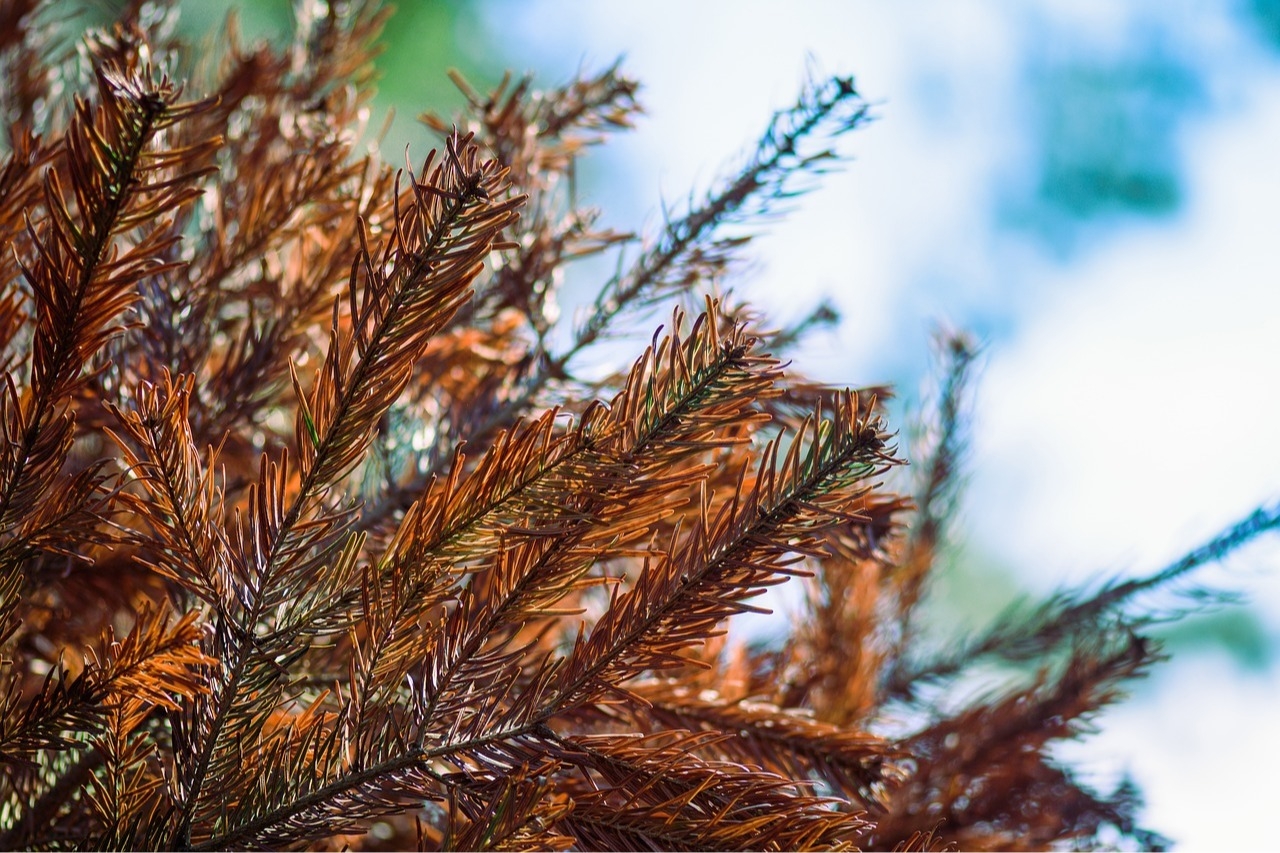How to Tell if You Have a Mountain Pine Beetle Infestation
Emerald ash borers are one of the most troublesome insects in the greater Denver area, but they’re far from the only ones that can hurt the trees on your property. The mountain pine beetle poses what many homeowners consider an even greater threat due to the popularity of different pine trees in residential landscape design. Mountain pine beetles, like ash borers, can hurt and even kill their respective trees, and knowing if you have an active infestation is key if you want to keep the damage from being truly extensive. Here are a few tell-tale signs to watch for so you can act quickly.
Yellow or Red Pine Needles
One of the easiest ways to tell that your trees are injured and under threat is to look at the condition of the pine needles. When your pine trees are experiencing an active infestation, the needles will typically turn yellow or red. This shows that the tree isn’t getting the nutrients it needs to support the full array of pine needles and must conserve those nutrients to support the health and stability of the central vascular system.
Needle Drop
Once the pine beetles nest inside the tree and the pine starts showing signs of distress, it’s normal to see pine needles dropping when you least expect them to. This typically happens a year or so after the initial infestation starts. The drop is different from age-related needle drop as the number of needles falling off the tree is typically greater, and the drop happens outside of the usual seasonal needle drop period during the summer months.
Increased Woodpecker Activity
Woodpeckers don’t feed off of the trees themselves. Instead, they feed off of insects infesting the tree. If you’ve noticed an increase in woodpecker activity on your property or have started seeing them flocking to your pine trees, you may have a pine beetle infestation. Keep in mind that woodpeckers are happy to eat just about any insect they can find, so seeing them pecking at your pine trees doesn’t inherently mean that you have pine beetles on your property.
Sawdust on the Ground
Pine beetles bore and burrow into the interior of the tree. This is what makes them so problematic and increases the likelihood of long-term damage to your pines. That burrowing often leaves visible sawdust behind. Check your trees and look for sawdust on the bark and around the base of the tree. If you see any, you likely have a pine beetle infestation and will want to schedule a treatment appointment as soon as you can.
Pine Beetles Can Kill Your Trees
The sooner you can get your trees inspected, the better chance your trees will have of surviving the infestation. If you notice even one of these signs of pine beetles on your property or have a neighbor who recently had an active infestation, contact Root Tree Service as soon as possible. Our plant health care team will inspect your trees and identify any possible damage so you can implement a treatment plan to protect the rest of your landscaping.
Go Back Yellow or Red Pine Needles
One of the easiest ways to tell that your trees are injured and under threat is to look at the condition of the pine needles. When your pine trees are experiencing an active infestation, the needles will typically turn yellow or red. This shows that the tree isn’t getting the nutrients it needs to support the full array of pine needles and must conserve those nutrients to support the health and stability of the central vascular system.
Needle Drop
Once the pine beetles nest inside the tree and the pine starts showing signs of distress, it’s normal to see pine needles dropping when you least expect them to. This typically happens a year or so after the initial infestation starts. The drop is different from age-related needle drop as the number of needles falling off the tree is typically greater, and the drop happens outside of the usual seasonal needle drop period during the summer months.
Increased Woodpecker Activity
Woodpeckers don’t feed off of the trees themselves. Instead, they feed off of insects infesting the tree. If you’ve noticed an increase in woodpecker activity on your property or have started seeing them flocking to your pine trees, you may have a pine beetle infestation. Keep in mind that woodpeckers are happy to eat just about any insect they can find, so seeing them pecking at your pine trees doesn’t inherently mean that you have pine beetles on your property.
Sawdust on the Ground
Pine beetles bore and burrow into the interior of the tree. This is what makes them so problematic and increases the likelihood of long-term damage to your pines. That burrowing often leaves visible sawdust behind. Check your trees and look for sawdust on the bark and around the base of the tree. If you see any, you likely have a pine beetle infestation and will want to schedule a treatment appointment as soon as you can.
Pine Beetles Can Kill Your Trees
The sooner you can get your trees inspected, the better chance your trees will have of surviving the infestation. If you notice even one of these signs of pine beetles on your property or have a neighbor who recently had an active infestation, contact Root Tree Service as soon as possible. Our plant health care team will inspect your trees and identify any possible damage so you can implement a treatment plan to protect the rest of your landscaping.
